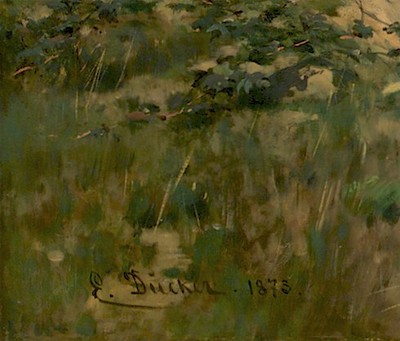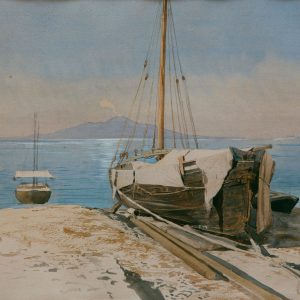
Eugen Dücker
1841 Arensburg ‐ 1916 Düsseldorf
Short information about the artist
Eugen Dücker first attended the “Imperial Academy of Arts” in St. Petersburg. In 1862 he received a six-year travel grant, which enabled him to first visit Düsseldorf and later also France, Holland, Belgium and Italy. With Eugen Dücker’s appointment as head of the landscape class (1872) as the successor to Oswald Achenbach, a change in style towards naturalism began in the Düsseldorf painting school, which was to replace the late romantic trends.
Works of art on offer
Videos about the artist
More information about the artist
Eugen Dücker first attended the “Imperial Academy of Arts” in St. Petersburg. In 1862 he received a six-year travel grant, which enabled him to first visit Düsseldorf and later also France, Holland, Belgium and Italy. With Eugen Dücker’s appointment as head of the landscape class (1872) as the successor to Oswald Achenbach, a change in style towards naturalism began in the Düsseldorf painting school, which was to replace the late romantic trends.
Dücker School
Atmospheric moods in clearly structured compositions became the distinguishing feature of the “Dücker School” for several decades, from which such important painters as Eugen Kampf, Helmuth Liesegang, Olof Jernberg and Max Clarenbach emerged. Friedrich Schaarschmidt, as a contemporary witness and reliable chronicler of the Düsseldorf School, described the change in retrospect in 1902: “The sea, which was familiar to Düsseldorf art through the Achenbachs and the Norwegians, became in a completely new way, not in its dramatic movement, but in of calm, in the shine of the sun, in melancholy sunsets and shimmering morning moods, carefully studied and painted with a virtuoso and meticulous technique. ” The novelty of this landscape conception is only recognizable against the background of the Düsseldorf tradition: Andreas Achenbach’s dramatic lake images and the moving Italian views of Oswald Achenbach corresponded to the taste of the time, against which Eugen Dücker set his pioneering “Pathos of Silence”. Nothing seems to happen in Dücker’s paintings that could distract the viewer’s attention from the perception of the finest moments of mood.
Museums and collections
Works by Eugen Dücker hang in the renowned public collections in Germany, including the National Gallery in Berlin, the Gemäldegalerie Neue Meister in Dresden and the Museum Kunstpalast in Düsseldorf. Dücker’s landscapes are still very popular with private collectors.

